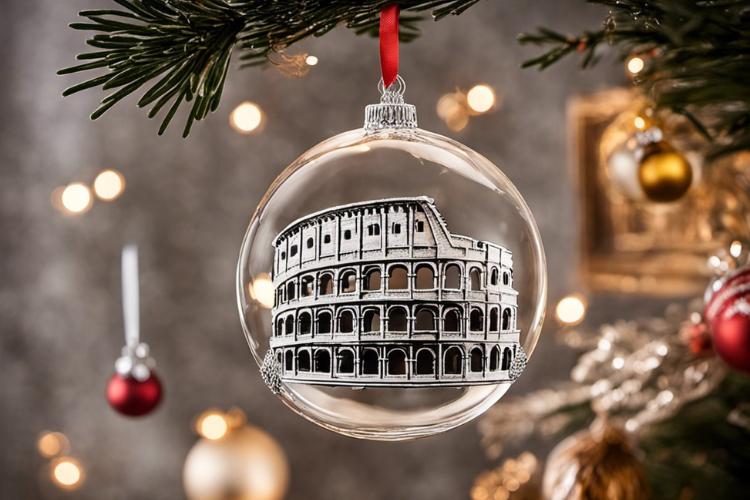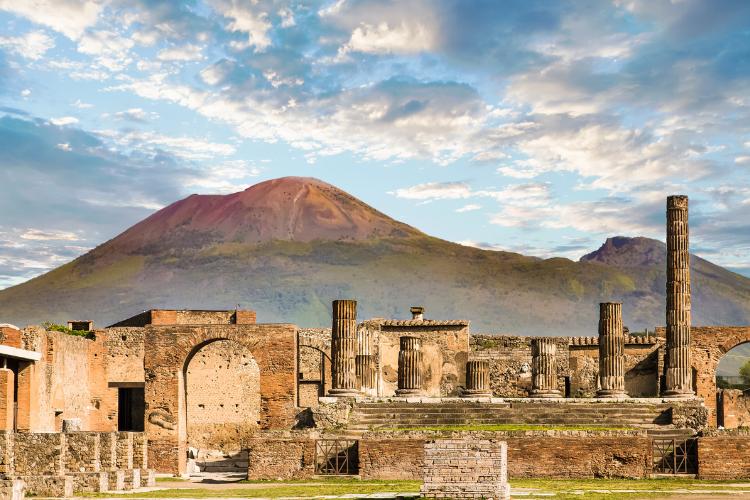20 Famous Italian Statues: Must-See Sculptures in Italy

Buongiorno, art enthusiasts! Max here, your guide to the grandeur of famous Italian statues, the masterpieces dotting the landscape of this artistic haven.
Embark on a journey with me as we explore sculptures in Italy. I will unveil the tales behind these immortal creations and guide you through Italy’s sculptural treasures.
Exploring Italy’s Iconic Sculptures: A Journey Through Time
As you stroll through the historic streets of Italy, a veritable open-air museum unfolds before you, where marble and bronze figures tell tales from ancient times to the Renaissance and beyond.
Italy’s cities and towns are adorned with various statues, each embodying the creative spirit of Italian sculptors across different eras.
These meticulously crafted works, spanning various artistic movements from Etruscan to Baroque and Neoclassical, capture human expression’s drama, emotion, and dynamism through the ages.
20 Must-See Famous Italian Statues
From the operatic tension of Gian Lorenzo Bernini’s Apollo and Daphne to the captivating finesse of Veiled Christ, these masterpieces exhibit the unique talent of Italian Renaissance artists and echo the ancient Greeks’ influence on Roman sculpture.
Marvel at the intricate detail of the Capitoline She-Wolf or the dynamic poses of the Riace Bronzes. Consider the serene emotion etched in the marble of Michelangelo’s Pietà or the charged realism found in Donatello’s David.
1. The Statue of David (Michelangelo)

👉 Discover it here: Accademia Gallery, Florence.
In Florence’s Accademia Gallery, Michelangelo Buonarroti’s statue of David (revealed to the public in 1504) is a testament to artistic perfection and one of the world’s most revered Italian sculptures.
This colossal statue, made with Carrara marble and crafted with astonishing detail, symbolizes strength and youthful beauty, epitomizing the Renaissance ideals of humanism and individualism.
As you gaze upon David, you’ll be captivated by the intense expression and intricate anatomy, each muscle and vein speaking to Michelangelo’s mastery.
Originally positioned outside the Palazzo Vecchio, it now commands awe within the gallery, continuing to inspire and embody the spirit of Florence.
2. La Pietà (Michelangelo)

👉 Discover it here: St. Peter’s Basilica, Vatican City (Rome).
Discover the heartrending beauty of Michelangelo’s Pietà in St. Peter’s Basilica, Vatican City. This masterpiece, completed in 1499 as the only piece Michelangelo ever signed, captures the moment of the Virgin Mary holding the lifeless body of Christ.
Crafted from a single block of marble, Pietà is renowned for its exquisite detail and emotional depth. It showcases Michelangelo’s unparalleled ability to convey human emotion and divine serenity.
As you witness this sculpture, you’ll be moved by the interplay of sorrow and love, frozen in a marble block yet alive with feeling.
3. La Madonnina (Giuseppe Perego)

👉 Discover it here: Duomo di Milano (Milan Cathedral), Milan.
Perched on Milan Cathedral’s highest spire, La Madonnina, crafted by Giuseppe Perego in 1774, symbolizes the city’s spiritual and cultural heart.
This golden statue, gleaming above 108 meters, ensures that no building in Milan surpasses its height, maintaining its status as the city’s protective watch.
As you explore Milan, look up to catch a glimpse of La Madonnina, a cherished emblem that blends religious devotion with architectural marvel, embodying Milanese tradition and pride.
4. Moses (Michelangelo)

👉 Discover it here: San Pietro in Vincoli Basilica, Rome.
In the tranquil ambiance of San Pietro in Vincoli Basilica in Rome, Michelangelo’s Moses statue commands attention. It is a testament to the artist’s skill in capturing human emotion and divine authority.
Commissioned for Pope Julius II’s tomb, this sculpture is a pinnacle of Renaissance art. Moses’ intense gaze and the tablets of law reflect a lifelike presence. Legend has it Michelangelo struck the knee demanding it speak, so convincing was its realism.
Encountering Moses, you’ll feel the powerful impact of Michelangelo’s genius, resonating through the ages.
5. Perseus with the Head of Medusa (Benvenuto Cellini)

👉 Discover it here: Piazza della Signoria, Florence.
In the heart of Florence’s Piazza della Signoria, Benvenuto Cellini’s Perseus with the Head of Medusa captures the essence of mythological triumph and political symbolism.
This striking bronze statue, set in the Loggia dei Lanzi, depicts Perseus victoriously holding Medusa’s head, a powerful allegory of the Medici family’s dominance over Florence.
As you stand before this masterpiece, you’ll be drawn into the narrative of power and artistic mastery that has resonated through the centuries, making it a pivotal piece of Florentine history and art.
6. Apollo and Daphne (Gian Lorenzo Bernini)

👉 Discover it here: Galleria Borghese, Rome.
At Rome’s Galleria Borghese, immerse yourself in the drama of Bernini’s Apollo and Daphne. This Baroque masterpiece captures the intense moment of transformation as Daphne morphs into a laurel tree, fleeing Apollo.
Bernini’s genius is evident in the fluid motion and detailed realism, portraying the myth with a dynamic energy that seems to defy the solid marble medium.
Your visit will be a journey through Ovid’s narrative, brought to life by Bernini’s unparalleled ability to meld storytelling with sculptural finesse.
Pro Tip: When visiting the Galleria Borghese, don’t miss the chance to explore the Villa Borghese Gardens – a splendid example of Italian landscape artistry.
7. Capitoline She-Wolf

👉 Discover it here: Piazza del Campidoglio, Rome.
The Capitoline She-Wolf is a timeless emblem of Rome’s mythical origins in the heart of the Capitoline Museums. This ancient bronze sculpture, believed from the medieval period, depicts the she-wolf nursing Romulus and Remus, Rome’s legendary founders.
The figures of the twins, added in the 15th century, bring to life the tale of the city’s miraculous beginnings. As you view this iconic piece, you’ll be transported to the era of ancient legends, encapsulating Rome’s enduring legacy and historical depth.
8. The Riace Warriors

👉 Discover it here: National Museum of Reggio Calabria.
Discover the Riace Warriors (known in Italy as Bronzi di Riace or Riace Bronzes) at the National Museum of Reggio Calabria. These majestic Greek bronze statues stand as testaments to the artistry of the ancient world.
Unearthed in 1972, these life-sized figures, dating back to the 5th century BC, showcase the pinnacle of classical sculpture with their detailed anatomy and dynamic poses.
As you admire these ancient warriors, you’ll be captivated by their history and the mystery of their long-lost origins, making them not only treasured pieces of Calabria but also monumental achievements of Greek sculpture.
9. Veiled Christ (Giuseppe Sanmartino)

👉 Discover it here: Sansevero Chapel, Naples.
In Naples’ Sansevero Chapel, Giuseppe Sanmartino’s Veiled Christ offers a spectacle of marble sculpture mastery.
The sculpture, depicting Christ under a transparent veil, astonishes with its realistic depiction of soft fabric over the body, showcasing Sanmartino’s skill in creating the illusion of delicate texture from hard stone.
This work reflects the artist’s technical prowess. It evokes a profound sense of piety and reflection, making it a must-see for those captivated by the intersection of spiritual depth and artistic perfection.
Suggested Read: 30 Fun Facts About Naples: Explore Napoli’s Charm.
10. Hercules and Cacus (Baccio Bandinelli)

👉 Discover it here: Piazza della Signoria, Florence.
At the entrance of Florence’s Palazzo Vecchio, the statue of Hercules and Cacus by Baccio Bandinelli stands as a symbol of strength and victory. This sculpture depicts the mythological battle where Hercules defeats the villain Cacus, representing the triumph of good over evil.
Although often compared to Michelangelo’s David, Bandinelli’s work holds its own significance. It illustrates the power of virtue and heroism in a dynamic, muscular form that captures the viewer’s imagination and conveys the enduring tales of ancient mythology.
11. The Rape of Proserpina (Gian Lorenzo Bernini)

👉 Discover it here: Borghese Gallery, Rome.
At Rome’s Borghese Gallery, be captivated by Bernini’s “Ratto di Proserpina” (appropriately translated as The Abduction of Proserpina), a sculpture that showcases his early mastery of marble and emotion.
Originally ordered by Cardinal Scipione Borghese for his residence in Rome and created in 1622, this work vividly portrays Pluto’s abduction of Proserpina in incredible detail, bringing the mythological scene to life.
Bernini’s skill in depicting the textures of skin and the intense expressions of the figures reflects the drama and complexity of the story, making it a striking example of Baroque artistry and a testament to the young Bernini’s prodigious talent.
Suggested Read: 10 Famous Artists from Italy You Need to Know
12. Ecstasy of Saint Teresa (Gian Lorenzo Bernini)

👉 Discover it here: Church of Santa Maria della Vittoria, Rome.
Visit the Church of Our Lady of Victory in Rome to experience the transcendent beauty of Bernini’s Ecstasy of Saint Teresa.
This sculpture, a marvel of Baroque art, portrays the saint in a moment of divine rapture, masterfully blending marble and golden light to create an ethereal atmosphere.
Bernini’s ability to capture the intensity of Teresa’s spiritual ecstasy and the delicate interplay of textures and light invites you into a world where heavenly and earthly realms converge. This masterpiece is a profound expression of religious experience and artistic innovation.
13. Laocoön and His Sons

👉 Discover it here: Vatican Museums, Vatican City (Rome).
Discover the Laocoön and His Sons in the Vatican Museums, a masterpiece of Hellenistic sculpture that encapsulates the tragic fate of the Trojan priest Laocoön.
This dynamic marble group portrays the intense moment of agony as Laocoön and his sons are ensnared by sea serpents sent by the gods as punishment.
The sculpture’s intricate detailing and expressive emotion draw you into the mythological narrative, offering a profound insight into the themes of suffering and divine wrath. It is a pivotal piece in the story of Trojan mythology and ancient artistry.
14. Faro della Vittoria (Edoardo Rubino)

👉 Discover it here: Park of Remembrance, Turin.
In Turin’s Park of Remembrance, Edoardo Rubino’s Faro della Vittoria (The Victory Lighthouse) is a poignant tribute to the fallen heroes of World War I.
Towering at 26 meters, this sculpture, also known as “Winged Victory,” dominates the city’s skyline and offers a breathtaking panorama. It symbolizes the soaring spirit of sacrifice and triumph.
When you visit Turin, the statue’s commanding presence and elegant form will leave you in awe. It embodies the city’s respect and remembrance for those who gave everything for peace.
15. Sancarlone in Arona (Giovan Battista Crespi)

👉 Discover it here: Arona (Novara), Lake Maggiore.
In Arona, overlooking Lake Maggiore, stands the imposing statue of Sancarlone, a monumental bronze effigy of St. Charles Borromeo. Erected in 1698, this giant statue, one of the tallest in the world, is a towering tribute to the saint’s influence and benevolence.
As you visit the Sacred Mount, Sancarlone’s serene yet commanding presence offers a unique opportunity to experience the blend of spiritual devotion and artistic grandeur, reflecting the legacy of one of Italy’s revered religious figures.
16. Equestrian Statue of Vittorio Emanuele II (Enrico Chiaradia, Emilio Gallori)

👉 Discover it here: Piazza Venezia, Rome.
The equestrian statue of Victor Emmanuel II, crafted by Enrico Chiaradia and completed by Emilio Gallori, is a gilded bronze marvel in the Vittoriano complex.
Casted in 1906 using bronze from Royal Army cannons, this imposing sculpture, 10 meters long and 12 meters high, serves as the complex’s centerpiece.
Victor Emmanuel II is depicted on a grand horse in a full-dress uniform, echoing the tradition of regal equestrian monuments, reminiscent of the iconic Marcus Aurelius statue in Rome.
17. Equestrian Statue of Marcus Aurelius

👉 Discover it here: Piazza del Campidoglio, Rome.
The Equestrian Statue of Marcus Aurelius, likely erected between 176 and 180 AD, is the sole surviving bronze statue of its kind from ancient Rome. This larger-than-life statue commemorated the Emperor’s victories and symbolized imperial legacy, resonating through the centuries.
First noted at the Lateran in the 10th century, it was moved to the Capitoline Hill in 1538 under Pope Paul III’s command. Michelangelo then integrated it into the Piazza del Campidoglio’s design, enhancing its stature as a pivotal symbol of Rome’s enduring imperial heritage.
18. Monument to Leonardo da Vinci (Pietro Magni)

👉 Discover it here: Piazza della Scala, Milan.
The Leonardo da Vinci monument in Milan’s Piazza della Scala unveiled in 1872, features a statue of the Renaissance master atop a base with his four pupils.
Created by Pietro Magni starting in 1858, the project faced financial and political hurdles during Milan’s transition between sovereignties.
Despite initial criticism over its location and association with Austrian rule, the monument stands as a tribute to Leonardo’s legacy. It is surrounded by the figures of Boltraffio, d’Oggiono, da Sesto, and Caprotti, representing his impact on the arts and his students.
19. Fountain of Neptune (Giambologna, Tommaso Laureti)

👉 Discover it here: Piazza del Nettuno, Bologna.
The Fountain of Neptune in Bologna, crafted by Giambologna and Tommaso Laureti in the 16th century, was commissioned by Pope Pius IV to symbolize his authority, mirroring Neptune’s command over the seas.
This fountain, situated in Piazza del Nettuno, represents political power and divine control. Neptune’s figure at the center wields a trident.
Beyond its political symbolism, the fountain exemplifies Renaissance artistry. It features detailed figures of cherubs and sea nymphs that enhance its historical and aesthetic significance, marking it as a cornerstone of Bologna’s cultural and artistic heritage.
20. Juliet Statue (Nereo Costantini)

👉 Discover it here: Juliet’s House Museum, Verona.
The Juliet Statue by Nereo Costantini, once housed in Juliet’s courtyard in Verona, symbolizes romance linked to Shakespeare’s tragic heroine.
Due to wear from the tradition of touching Juliet’s right breast for luck in love, the original has been moved to Juliet’s house museum, and a replica has been replaced in the courtyard.
This site continues to attract global visitors, cementing its status as a romantic pilgrimage spot. The ongoing tradition reflects the legacy of Shakespeare’s work and Verona’s connection to the timeless story of Romeo and Juliet, symbolizing eternal hope and love.
Before You Go…
Uncover more layers of Italy’s rich heritage by exploring the 21 Famous Italian Symbols & Meanings: Icons of Italy. Dive deeper into the heart of Italian culture.






